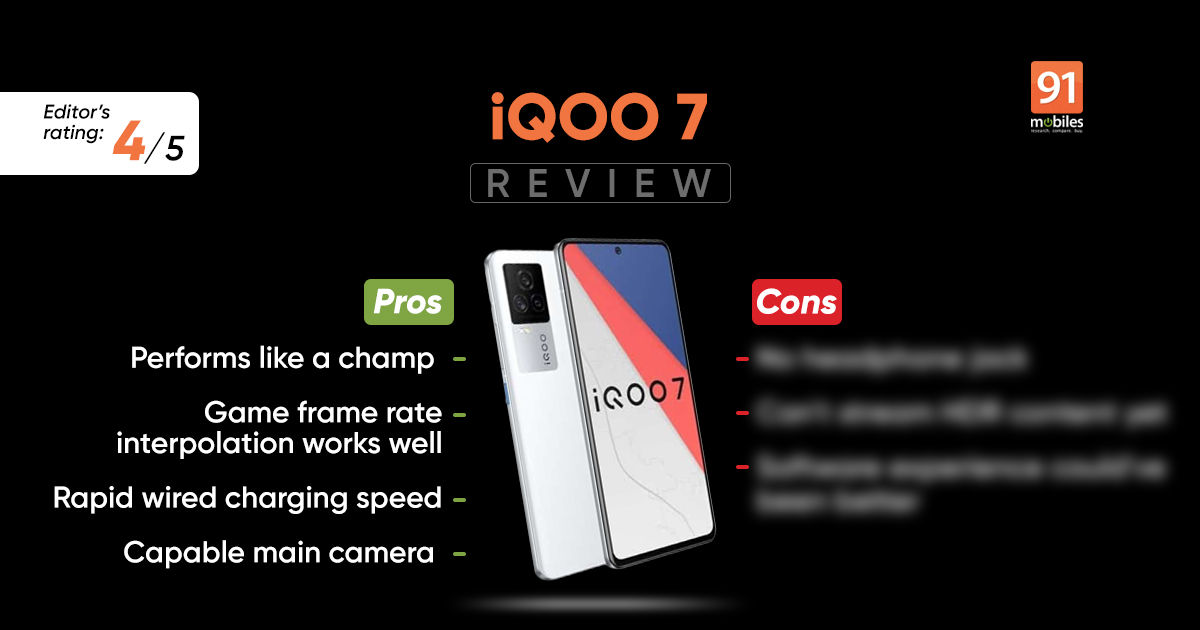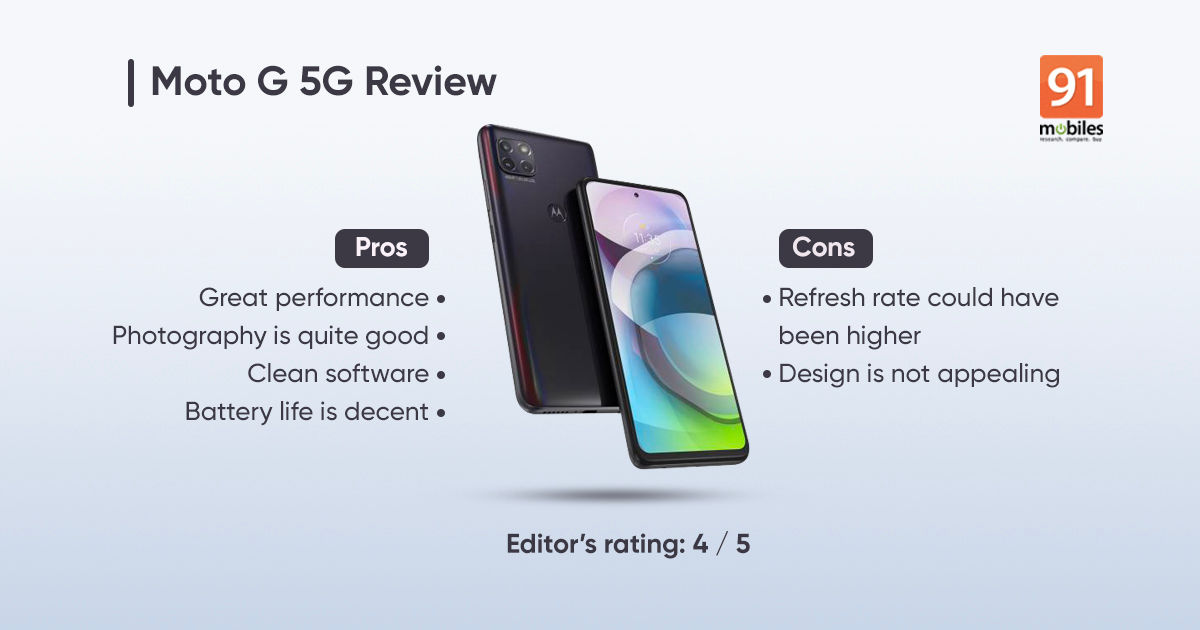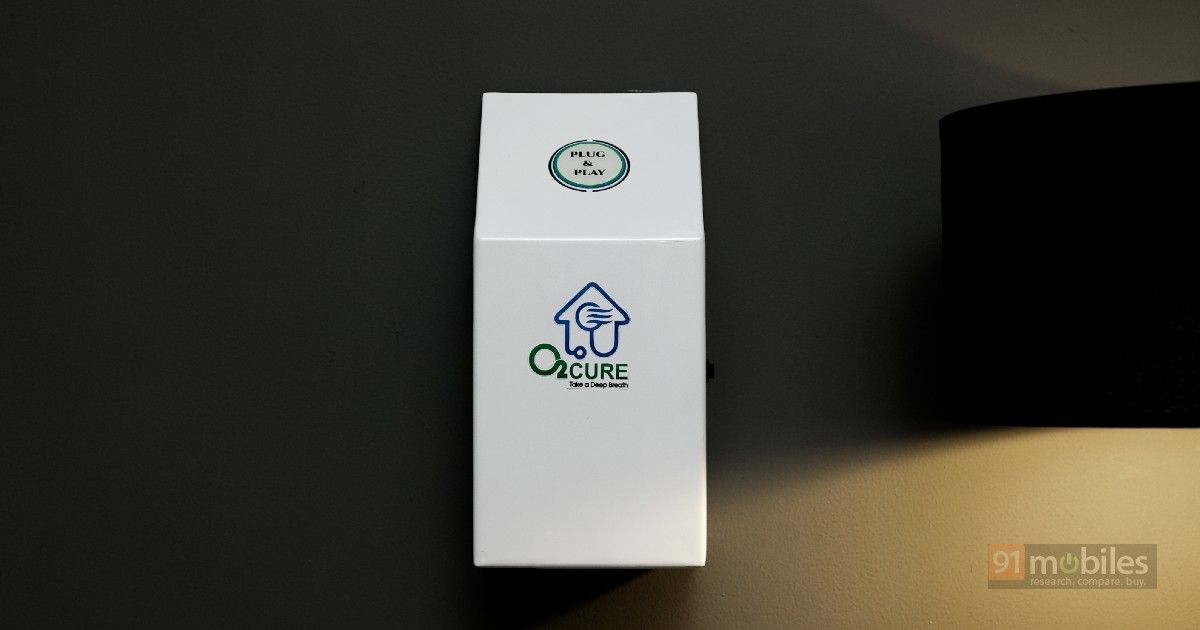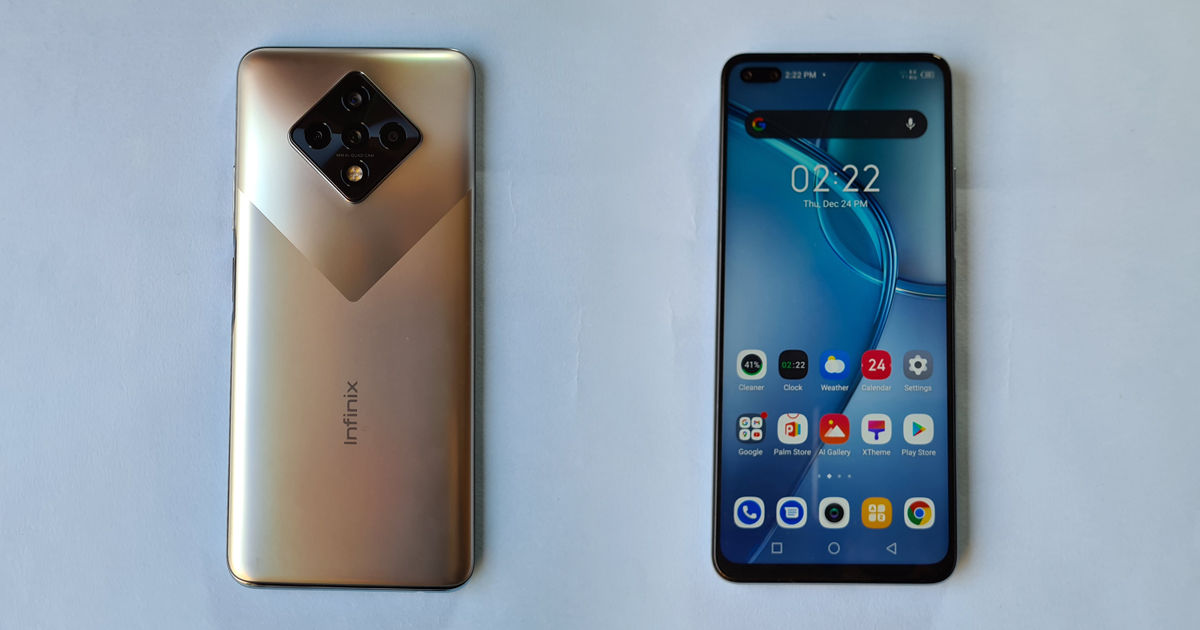iQOO 7 review: more than just a gaming phone

Back in the day, smartphone brands would diversify their portfolio across a variety of product ranges catering to different price brackets. However, over the last few years, we’ve seen more and more OEMs come up with a sub-brand to branch into different segments and capitalise on various niches too. Case in point, Vivo’s sub-brand iQOO, which debuted in India last year with an aim to bring high-performance gaming phones to the masses. To some extent, the company managed to achieve that with the iQOO 3 (review), which was among the first 5G-ready phones in the country to ship with Qualcomm Snapdragon 865 SoC, as well as UFS 3.1 storage. However, the handset’s software experience wasn’t up to the mark and the device’s 60Hz screen was perceived as a deal-breaker by many.
Well, after over a year, the company has returned with yet another gaming phone in the form of the iQOO 7, and going by the handset’s spec sheet, the device will undoubtedly throw a spanner in the works of rivals. In particular, the smartphone will go toe-to-toe with the recently-launched Xiaomi Mi 11X (review), which ships with compelling specs, to say the least. So, in this review, let’s take a thorough look at the iQOO 7 and see if it can rain on Xiaomi’s parade, and see if it can triumph over the competition.
Table of Contents
Verdict
The iQOO 7 is among the fastest Android phones under Rs 35K. It’s not just a good gaming phone, but also a quality daily driver, thanks to its capable camera setup, good-looking design and uber-fast wired charging speeds.
Design
iQOO knows a thing or two about designing good-looking phones. In fact, last year, the company announced the iQOO 3 in a stunning Volcano Orange hue which to date, is among the nicest-looking finishes I’ve seen on a phone. The iQOO 7 too, ships with a gorgeous design which is further accentuated by the unit’s attractive Solid Ice Blue hue which gleams under the sun. Furthermore, the back of the phone ships with an AG matte glass which doesn’t just feel smooth to the touch, but also keeps smudges at bay. I’d also like to add that the smartphone’s camera module sits flush with the chassis, and the unit’s boxy frame feels more polished compared to, say, the elliptical camera housing on the Mi 11X. The module also ensures that the handset doesn’t wobble when laid flat on a surface, which is great.
Now, unlike its predecessor, the iQOO 7 employs a sleek chassis that measures just 8.3mm. Coupled with the smartphone’s featherlight weight of just 196 grams, the iQOO 7 will seldom weigh down your wrists, even after prolonged usage. And, while the phone is not suited for one-handed usage owing to its tall frame, you can get away with using the device without a case as the unit’s curvy back imparts a confident in-hand grip too.
Unfortunately, much like the Mi 11X, the iQOO 7 too omits the headphone jack. However, unlike Xiaomi’s offering, the smartphone doesn’t ship with a 3.5mm dongle, which is quite disappointing. Consequently, you will have to shell out extra bucks to enjoy music via a pair of wired headphones on the smartphone. Thankfully, the device features a quality set of stereo speakers that get quite loud and offer good depth to the audio too. The same goes for the smartphone’s in-display fingerprint sensor as well as its facial recognition tech too, both of which got me into my home screen in the blink of an eye. I should point out that the iQOO 7’s face unlock software works even when you’re wearing a mask, so it might not be as secure as the fingerprint reader. Other than that, the iQOO 7’s design ticks most of the right boxes.
Display
Much like the Mi 11X, the iQOO 7 also employs Samsung’s E4 AMOLED panel which refreshes at 120Hz. As for the dimensions, the screen measures 6.62-inches and offers full HD+ resolution, making it plenty sharp to consume content on the fly. What’s more, the panel gets satisfactorily bright and the screen offered stellar viewing angles and ample contrast as well. Unfortunately, not all is good and dandy with the iQOO 7’s screen. For one, contrary to the company’s claims, the display isn’t compliant with HDR media from OTT platforms like Netflix and Amazon Prime and correspondingly, you will be limited to HD streams from the aforementioned services.
What’s more, while the display’s 120Hz refresh rate paves way for smooth animations and transitions, I noticed that the screen would often drop the same to 60Hz to accommodate certain UI elements like the gallery app. In fact, with the Display Checker app relaying real-time refresh rate to the screen, it was evident that the panel was defaulting to 60Hz on apps like Instagram too, even after I had opted to lock the same to 120Hz on the phone. Consequently, the scrolling animations felt jittery every time a video or a reel popped on my feed, as the panel would instantly drop the refresh rate to 60Hz from 120Hz.
Thankfully, the iQOO 7’s screen has a few aces up its sleeves. Notably, the display offers minimal touch latency as it ships with a touch sampling rate of 300Hz. Correspondingly, the display will pick up on all your finger gymnastics when you’re playing a game, or merely using the phone day in and day out. Adding to the list of pros, the iQOO 7 also ships with an intelligent display chip that does MEMC or frame interpolation in popular games like Call of Duty Mobile, Garena Free Fire, and even Genshin Impact. I’ll talk more about the same in the subsequent section but rest assured, the handset’s display is a godsend for gamers.
Cameras
Most gaming phones gloss over their respective camera setups but much to my surprise, the iQOO 7 is a fantastic pocket-shooter. The smartphone comes equipped with a triple camera setup towards the back, comprising Sony’s IMX598 48MP sensor which works alongside a 13MP wide-angle lens and a 2MP mono lens. For selfies, the device gets a 16MP camera up front.
During the day, the iQOO 7 clicks exceptionally detailed photos with stellar dynamic range. Now, the phone does bring up the colours in the shots however, disabling AI scene recognition does allow the handset to render more realistic images. Compared to the Mi 11X, shots from the iQOO 7 don’t just look more appealing to the eyes, but the images output a greater amount of details, and the handset managed to bring out the information from the shadows better too. Consequently, under ideal lighting conditions, you’ll find very little to complain about the photos shot from the iQOO 7’s primary camera.
The wide-angle sensor, however, isn’t the best and at a closer crop, you’ll notice instances of oversharpening along with lacklustre corner details. That being said, the smartphone’s wide-angle sensor can double up as a macro camera too, and here, the sensor did a commendable job at snapping closeups of flowers and shrubs in my apartment complex. Lastly, I’d like to shed some light on the sensor’s lowlight capabilities (pun intended). The iQOO 7’s 48MP sensor outputs serviceable images with passable details after the sun has set. Unfortunately, as can be seen from the shot of the buildings I’ve attached in the gallery above, the smartphone introduces a fair amount of noise in the photos too, which is evident if you zoom into the images.
Thankfully, if you click more photos from a phone’s front camera, then you’re in luck as the iQOO 7’s selfie shooter clicks gorgeous self-portraits with ample details and good colour reproduction. That said, the bokeh effect isn’t the cleanest I’ve seen on a sub-Rs 32K phone and the device struggled to create a convincing blur effect around my unruly hair. On the flip side, the phone can click serviceable images after the sun has set too. The lowlight selfies I snapped with the phone’s screen flash enabled exhibited good facial details, and the handset managed to squeeze out information from objects in the background too. Interestingly, the smartphone also gives you the option to beautify your face in video calls, which was a first for me as I’ve never come across this feature on any other phone. Regardless, selfie-enthusiasts will find plenty to like about the iQOO 7’s selfie-camera setup.
Performance and battery life
The iQOO 7 is the latest smartphone in the country to come equipped with Qualcomm’s Snapdragon 870 processor which in the case of my review unit, works alongside 256GB of UFS 3.1 storage and 12GB of LPDDR4X memory. Now, I should add that while the Mi 11X comes equipped with the same SoC too, the handset features faster LPDDR5 RAM. However, for all intents and purposes, my experience was the same across both the smartphones, and the iQOO 7 showed no signs of slowing down during my stint with it – app launch times were minimal, the handset could hold a bunch of apps in memory and the benchmark scores were on par, if not better, than the competition. In fact, in Antutu Benchmark, the handset outputted a score of over 690,000 points, which was noticeably higher than the Mi 11X’s score, which topped out at around 650,000 points.
As for gaming, well, the iQOO 7 is truly a remarkable proposition. While you can max out the graphics settings in most games on pretty much any Snapdragon 870-powered handset, the iQOO 7 takes the user’s gaming experience up a notch with its MEMC game frame interpolation tech. In a nutshell, the smartphone’s dedicated display chip intelligently adds ‘transition’ frames between two in-game frames, thereby allowing the phone to push way beyond a title’s native frame rate. Consequently, gamers can then leverage the phone’s high refresh rate display to mitigate screen tearing, which occurs when the panel is not in sync with the game’s frame rates.
As an example, most high-end phones ship with a 120Hz refresh rate screen nowadays, but popular games like Call of Duty Mobile still max out at just 60fps. However, with iQOO 7’s MEMC game frame rate interpolation, the phone can output 120fps in Call of Duty Mobile, thereby ensuring a smoother and more visually pleasing experience. What’s more, despite featuring a dedicated chip that adds frames to demanding titles in real time, the iQOO 7’s chassis didn’t get too hot to the touch and the SoC didn’t thermal-throttle even after over an hour of gaming either. Suffice it to say, I’ll find it extremely hard to acclimate myself to playing games like Call of Duty Mobile and Genshin Impact on any other phone in the future.
In terms of battery life, the iQOO 7 ships with a 4,400mAh cell which should last you a full day. During my testing, I was netting close to six hours of Screen on Time with the phone, and that’s with the display set to operate at 120Hz. What’s more, unlike the Mi 11X, the iQOO 7 ships with stupendously fast wired charging, and buyers opting for the phone will get a 66W brick with the handset. With it, I managed to charge the phone completely in just 28 minutes, which let me assure you, is no mean feat. So, if you are a sucker for fast-charging speeds, the iQOO 7 will not disappoint you.
Software and connectivity
Software-wise, the iQOO 7 ships with Vivo’s Funtouch OS on top of Android 11. The custom skin has come a long way and its latest iteration looks a lot like stock Android. That said, the iQOO 7 comes riddled with a ton of bloatware and the company’s V-store will clutter your notifications tray with unnecessary app recommendations too. Correspondingly, I would suggest you uninstall all the pre-loaded apps from the get-go, and force stop any bundled app that cannot be removed from the phone. I’d also like to add that the custom skin doesn’t ship with a lot of features to begin with, and I was left wanting for more customisation options with the phone. All things considered, the iQOO 7’s software is more refined than ever, but there’s still a lot of work cut out for the company.
Thankfully, I didn’t run into any connectivity issues with the iQOO 7 and the handset offered stellar download speeds on my Airtel postpaid SIM. What’s more, the smartphone can connect to 5GHz Wi-Fi networks too and the unit’s Bluetooth connectivity didn’t disappoint me in the slightest either.
Final verdict
The iQOO 7 retails for Rs 31,990 in India, though buyers opting for the phone can avail numerous offers and get the MRP down to as low as Rs 30K. For the price, the device brings a lot of enticing features to the table including excellent performance, a gorgeous design, capable cameras, and stupendously fast 66W wired charging.
While there are other Snapdragon 870-powered devices in the market, the iQOO 7 manages to stand out owing to its well-rounded feature set and aggressive pricing. Therefore, if you were planning to shell out Rs 30K on a new phone, the iQOO 7 should be at the top of your wishlist.
Editor’s rating: 4 / 5
Pros:
- Performs like a champ
- Game frame rate interpolation works well
- Rapid wired charging speed
- Capable main camera
Cons:
- No headphone jack
- Can’t stream HDR content yet
- Software experience could’ve been better







